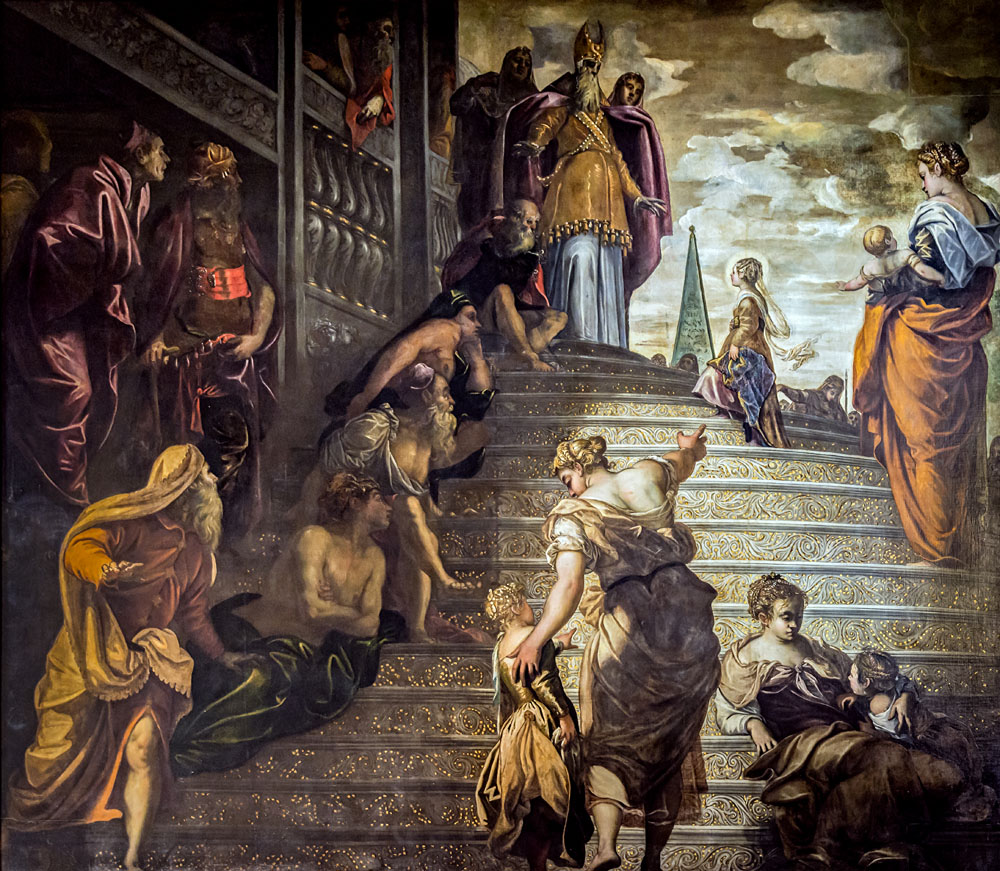Jacopo Tintoretto, The Presentation of the Virgin Mary in the Temple

1552-53
Oil on canvas, 15.7 x 14 feet (480 x 429 cm.)
Church of Madonna dell'Orto, Venice
In a composition typical of his style, Tintoretto draws the viewer into the space by putting Mary near the top of the steps and a mother and child at the bottom. The mother directs her daughter's attention to Mary's example, and thus does the same for the viewer. In contrast, the mother in the lower right has turned her back to the scene and drawn her own child's attention to herself. There had been beggars in other paintings on this subject, but here the artist arrays them along the rising steps, all of them watching Mary in rapt attention as she confidently ascends the fifteen steps toward the imposing figures at the top. They are in shadow, she in full light – a reflex of the light she will bring one day into the darkness of the Old Law.
The perspective and the girls at the bottom of the stairs constitute a riposte to Titian's stiffly horizontal arrangement two decades earlier. It also proved to be more influential than Titian's, being adopted in many later Presentations. In Zadar, Bernardino Ricciardi's canvas (1567-68) has the beggars on the left, the child with pointing mother, the full fifteen steps, and the light/shadow contrast between Mary and the priests.1 In Venice, no fewer than three Presentations take their cue from Tintoretto. Vassilacchi's version of 1600 has the pointing mother at the base of the steps and puts the priests in shadow and Mary in sunlight (carrying a candle, no less!). Luca Giordano's
1671 version omits the beggars but otherwise follows Tintoretto's model with the contrasting mothers at the bottom of the steps and the contrastive light and shadow for Mary and the priests. In Lucadello's Presentation there is no contrast, for both mothers point enthusiastically to daughters who seem eager to follow Mary's example. Similar examples include Barocci's altarpiece in Santa Maria in Vallicella, Rome (1593-94), and Jacob Zanusi's in Schwaz, Tyrol (1730).
The obelisk in the background is drawn from Titian's painting on the same subject and is also depicted in Vassilacchi's work. See my page on Titian's version for a discussion of the role the obelisk plays in the iconography.
Read more about images of the Presentation of Mary.
Source: this page at Wikimedia Commons..